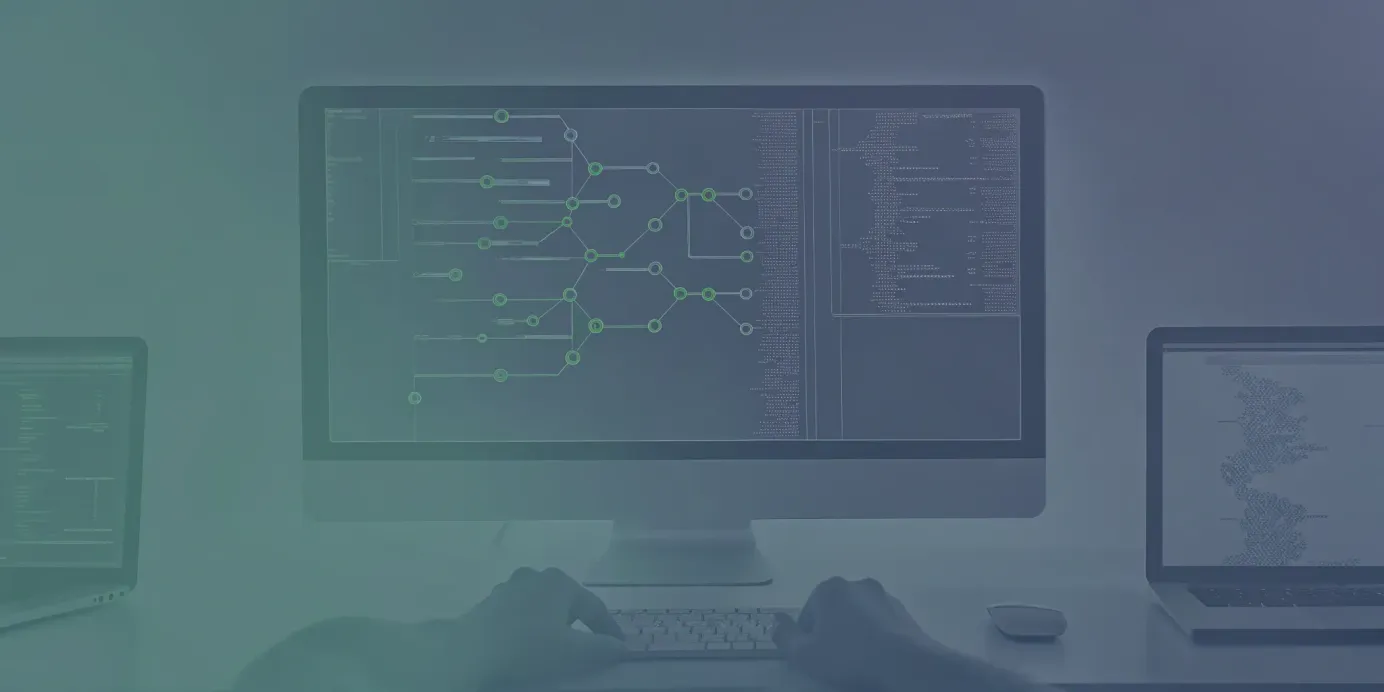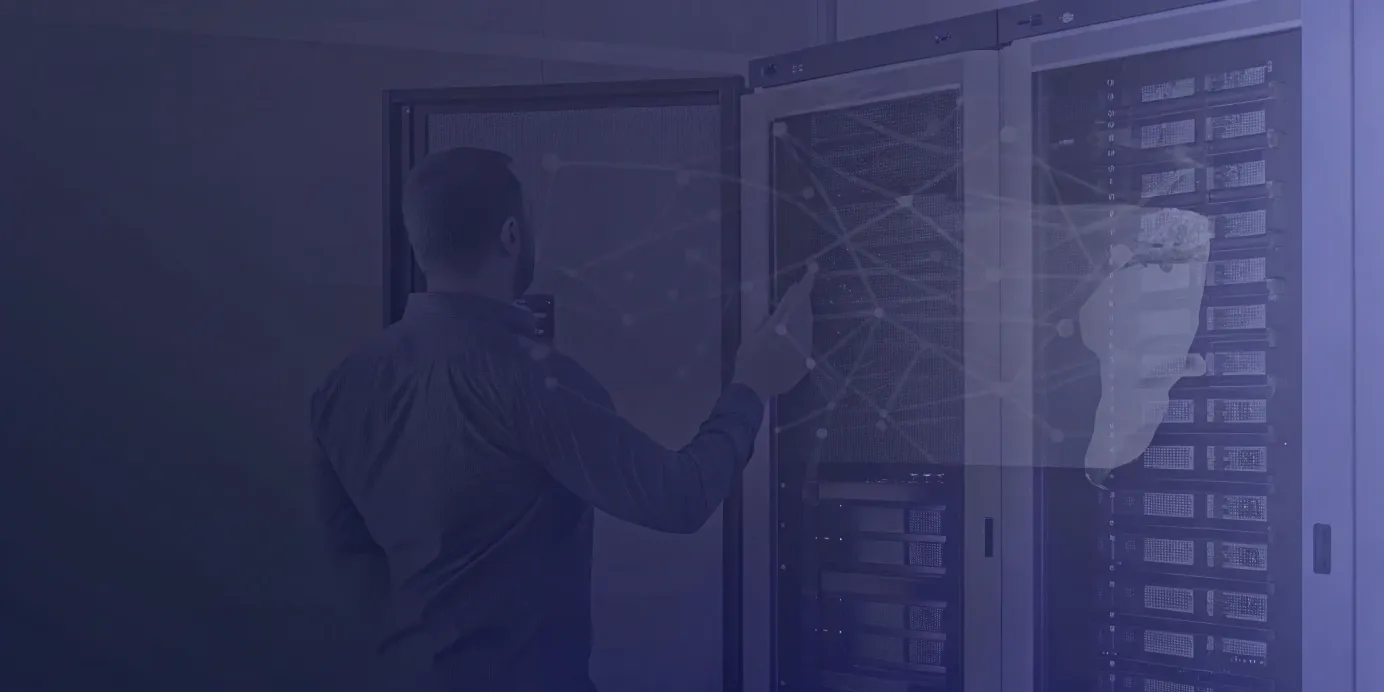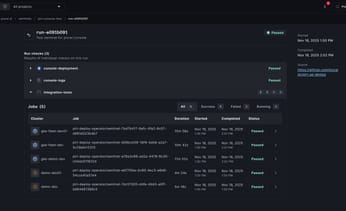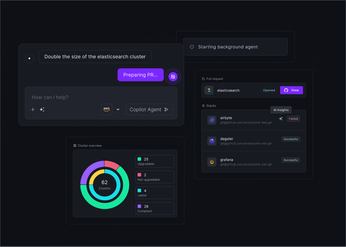
Generative AI for Kubernetes Issue Resolution: Pros, Cons, and Best Practices
Get practical insights on generative AI for Kubernetes issue resolution, including benefits, challenges, and best practices for faster, more accurate troubleshooting.
Modern Kubernetes clusters produce enormous amounts of telemetry—logs, metrics, traces, and events. While this data is vital during incidents, its volume can overwhelm engineers trying to pinpoint the root cause. Humans struggle to filter the noise and identify the critical signals under pressure.
Generative AI, on the other hand, can analyze and correlate millions of data points in real time, detecting subtle patterns that often precede failures. By applying AI to Kubernetes observability, teams can convert data overload into actionable insights, enabling faster and more precise troubleshooting while automating parts of the incident response workflow.
Unified Cloud Orchestration for Kubernetes
Manage Kubernetes at scale through a single, enterprise-ready platform.
Key takeaways:
- Automate root cause analysis: AI processes vast amounts of telemetry data to identify complex patterns and pinpoint the source of an issue in seconds, freeing engineers from manual data sifting.
- Prioritize data quality and security: An AI's diagnostic accuracy depends entirely on the data it ingests. Ensure you have clean, comprehensive operational data and implement security protocols to protect sensitive information processed by the model.
- Treat AI as a managed system: Continuously monitor the AI's performance, track its resource consumption, and establish a feedback loop for retraining to ensure the model remains accurate and effective as your Kubernetes environment evolves.
What Is Generative AI for Kubernetes?
Generative AI for Kubernetes uses large language models (LLMs) and other AI techniques to simplify the management and troubleshooting of containerized environments. Instead of manually sifting through logs or decoding cryptic errors, engineers can use AI to automate analysis, generate configuration snippets, and receive plain-language explanations for complex issues. This approach transforms large volumes of operational data into actionable insights, helping teams handle the inherent complexity of distributed systems. The goal is to empower engineers with an AI assistant that accelerates diagnostics and resolution—not to replace them.
How AI-Powered Troubleshooting Works
AI-powered troubleshooting automates the identification, explanation, and remediation of issues in a Kubernetes cluster. When a problem—such as a CrashLoopBackOff—occurs, AI ingests relevant data streams including logs, metrics, and events from affected components. It then analyzes this information to determine the root cause. Rather than just flagging an error, the model produces a human-readable summary explaining the issue, such as a misconfigured environment variable or a persistent storage problem. This turns root cause analysis from a manual investigation into an automated workflow, providing engineers with clear, context-aware remediation steps.
How AI Analyzes Cluster Data
AI models process cluster data similarly to a seasoned SRE, but at scale and speed beyond human capability. They continuously ingest and correlate information from multiple sources across the Kubernetes fleet—pod statuses, resource metrics, network traffic, and YAML configurations. By learning the normal operating baseline of the environment, AI can detect subtle anomalies or patterns indicating potential failures. Platforms like Plural centralize this data, offering a single-pane-of-glass view that enables AI to analyze fleet-wide health accurately and provide actionable insights.
Common Misconceptions and Limitations
A common misconception is that generative AI can solve all Kubernetes problems automatically. Its effectiveness depends on the quality and context of the input data. Without proper grounding, AI models can “hallucinate,” producing plausible but incorrect solutions or inventing non-existent components. Generative AI should be viewed as a powerful assistant that augments an engineer’s expertise. Human oversight is critical to validate AI suggestions and make final decisions, especially in production environments where mistakes carry high costs. Understanding these limitations ensures AI accelerates critical thinking without replacing it.
How AI Transforms Kubernetes Issue Resolution
AI is reshaping how engineering teams handle Kubernetes troubleshooting. Instead of manually combing through logs and metrics after an incident, AI-powered tools can analyze telemetry in real time to detect, diagnose, and even predict issues. By processing vast streams of cluster-wide data—including logs, metrics, traces, and events—AI can uncover complex patterns that are nearly impossible for humans to spot.
This capability shifts teams from a reactive approach to a proactive one. AI doesn’t just report that a pod is in a CrashLoopBackOff state; it can correlate that event with a recent deployment, a memory spike, and a specific error log to pinpoint the root cause. Engineers can resolve incidents faster, prevent outages, and spend less time on manual diagnostics, focusing instead on building resilient systems.
Automate Analysis with Pattern Recognition
AI excels at automating the analysis of complex datasets through pattern recognition. By learning from historical incident data, logs, and performance metrics, AI establishes a baseline of normal cluster behavior. It can then instantly detect deviations and identify patterns signaling known issues—like a sequence of error messages preceding a database connection failure.
This automation handles the initial, labor-intensive phase of troubleshooting, providing both detection and explanation. Engineers can focus on remediation and strategic improvements rather than manually digging through raw telemetry.
Identify the Root Cause Faster
In distributed systems like Kubernetes, symptoms often appear far from the source of the problem. A failing service might stem from a misconfigured network policy, a resource limit on another node, or a dependency issue. AI correlates events across the system—linking a spike in application latency to increased disk I/O and a recent storage configuration change—to construct a probable chain of events.
By providing concise root cause analysis, AI dramatically reduces Mean Time to Resolution (MTTR), eliminating guesswork and hours of manual investigation.
Predict Issues Before They Happen
AI enables predictive analysis by monitoring subtle trends and deviations from normal behavior. It can forecast potential failures, such as a gradual memory leak in a microservice or a node’s disk filling up before an outage occurs.
This proactive approach allows teams to intervene before incidents impact users. Like a vigilant SRE, AI continuously identifies risks, generating alerts or tickets for preemptive action and shifting operations from firefighting to preventive maintenance.
Monitor Your Cluster in Real Time
Traditional monitoring often relies on static thresholds that can produce false positives or miss nuanced issues. AI provides context-aware, dynamic monitoring—understanding when high CPU usage is expected during batch jobs versus when it indicates a problem.
Continuous analysis across the cluster produces a holistic view of health, enhanced by platforms like Plural, which centralize data in a single-pane-of-glass console. AI can monitor the environment effectively, providing insights beyond basic threshold-based alerts.
Integrate with Your Existing Tools
For AI to be impactful, it must fit seamlessly into existing workflows. Modern AI-powered troubleshooting tools integrate with DevOps ecosystems: sending actionable alerts to Slack, creating Jira tickets with diagnostic data, or triggering GitOps workflows.
This integration ensures insights reach the platforms engineers already use. For instance, AI could detect a vulnerability, suggest a fix, and open a pull request automatically. By embedding into existing tooling, AI adoption becomes frictionless and directly improves operational efficiency.
Why Use AI for Kubernetes Troubleshooting
As Kubernetes environments scale, traditional troubleshooting struggles to keep pace. Manually analyzing logs, metrics, and events across hundreds of microservices is slow, error-prone, and burdens specialized DevOps and SRE teams. This reactive approach often traps teams in a cycle of firefighting, leaving little time for strategic initiatives that drive business value.
AI-powered tools shift this paradigm from reactive to proactive. Machine learning models trained on operational datasets can automate detection, analysis, and even remediation of complex issues. Rather than relying on engineers to correlate spikes in CPU usage, cryptic error logs, and failing pods, AI identifies these patterns in seconds. This accelerates issue resolution and uncovers subtle performance degradation or potential failures before they impact users. Platforms like Plural integrate these capabilities directly into a unified management console, providing a single pane of glass for intelligent Kubernetes operations.
Respond to Incidents Faster
When services fail, every second counts. The primary bottleneck is often identifying the root cause. AI shortens this phase by analyzing millions of log entries, metrics, and traces in real time to pinpoint the sequence of events leading to a failure. By automating detection, explanation, and resolution, AI directly reduces Mean Time to Resolution (MTTR), helping teams restore service faster and minimize operational impact.
Improve Diagnostic Accuracy
Manual troubleshooting is prone to human error and cognitive bias, where engineers may focus on obvious symptoms while missing subtle underlying causes. AI analyzes data objectively, spotting patterns and anomalies that humans might overlook. By learning from historical incidents, models become increasingly precise. AI-driven diagnostics, like those in Plural, provide clear, context-aware explanations for issues such as CrashLoopBackOff or ImagePullBackOff, moving teams from guesswork to data-driven conclusions.
Optimize Resource Usage
Inefficient resource allocation is a common and costly challenge in Kubernetes. AI can monitor consumption patterns across a cluster fleet, identifying waste and preventing bottlenecks. By recommending optimized CPU and memory requests and limits, AI ensures applications have the resources they need without over-provisioning. This leads to lower cloud costs, improved performance, and a more stable, resilient infrastructure.
Automate Documentation
Documentation is crucial for scaling knowledge but often gets neglected under pressure. Generative AI can automatically create post-mortems and update internal knowledge bases. After resolving an incident, AI can summarize symptoms, diagnostic steps, root cause, and applied fixes. This captures valuable lessons, creating a searchable history that accelerates resolution of future issues.
Reduce Manual Intervention
AI reduces the need for hands-on troubleshooting by automating routine tasks, freeing skilled engineers for strategic work—like designing resilient architectures, improving workflows, or building new features. By empowering engineers to resolve complex issues independently, AI decreases reliance on a small group of experts and fosters a more capable, efficient team. Platforms like Plural integrate AI directly into operations, making this vision practical for real-world Kubernetes environments.
How to Implement AI for Kubernetes
Integrating AI into Kubernetes operations requires more than deploying a new tool; it demands a structured approach that addresses security, data quality, and team readiness. A successful implementation ensures the AI system is effective, trusted, and enhances your team’s ability to manage complex environments.
Consider Security and Compliance
Kubernetes telemetry contains sensitive information from logs, metrics, and configurations. It’s critical to understand how an AI tool handles this data. Evaluate where data is stored, whether it is used for external training, and what safeguards protect it. This is especially important for organizations bound by regulations like GDPR or HIPAA.
Architecture matters. For example, Plural uses an agent-based model with egress-only communication, so the management plane never requires direct inbound access to clusters. This design reduces the attack surface and keeps sensitive data under your control, a key consideration when integrating any AI service.
Ensure Data Quality
AI’s accuracy depends on the quality of input data. Inconsistent or incomplete logs and metrics will lead to unreliable analysis and incorrect conclusions. Standardizing logging and monitoring practices across services ensures the AI receives comprehensive, context-rich data.
Engage domain experts to validate the relevance of data and use a unified platform to provide a single pane of glass across all clusters. This consistency simplifies analysis and improves the AI’s ability to detect patterns and diagnose issues effectively.
Prepare Your Team
AI should augment engineers’ capabilities, not replace them. By providing clear, step-by-step recommendations, AI can serve as a teaching tool, helping engineers—especially juniors—understand complex problems and resolve them independently.
Training is essential: teams must learn to interact with AI, interpret its suggestions, and recognize its limitations. Trust in the system, combined with sound judgment, ensures AI handles routine troubleshooting while senior engineers focus on strategic initiatives.
Validate Your AI Models
Before integrating AI into production workflows, validate its performance. Test the model against historical incidents to verify that it can correctly identify root causes. Assess its behavior with novel failure scenarios to understand its precision and limitations.
Validation is ongoing. As your Kubernetes environment evolves, continuous evaluation and retraining are necessary to maintain the model’s effectiveness and alignment with current architectures.
Monitor Performance
Once deployed, monitor the AI system continuously. Track metrics such as diagnostic accuracy, response latency, and its impact on Mean Time to Resolution (MTTR).
Establish feedback loops so engineers can report incorrect or unhelpful recommendations. Combining quantitative metrics with qualitative feedback ensures the AI adapts and improves over time, maintaining its value to your team.
Essential Tools and Metrics to Track
Adopting AI for Kubernetes troubleshooting requires more than deploying a tool—you need the right solutions and a framework to measure their impact. Without tracking performance and resource consumption, even powerful AI systems can become noise or impose hidden costs. A structured approach ensures you can assess effectiveness, optimize performance, and demonstrate contributions to operational stability and efficiency.
Popular AI Solutions for Kubernetes
Several open-source and commercial tools are emerging for AI-driven Kubernetes management. K8sGPT, for example, acts like an SRE by analyzing clusters, diagnosing issues, and suggesting fixes in plain language. Samsung’s SKE-GPT is another diagnostic tool tailored to their Kubernetes engine. While standalone tools provide a starting point, integrated platforms like Plural embed AI directly into the Kubernetes dashboard. This reduces context switching and accelerates incident response by combining analysis and remediation in a unified interface.
Check for Integration Capabilities
An AI tool must fit seamlessly into your existing systems, including monitoring stacks, CI/CD pipelines, and communication platforms like Slack. K8sGPT, for instance, can connect with multiple AI providers and pull data from observability tools while pushing actionable alerts to incident response channels. Tools that operate in silos increase workload, whereas integrated solutions streamline the full troubleshooting workflow from detection to resolution, making AI a natural part of daily operations.
Key Performance Indicators to Track
To evaluate AI effectiveness, monitor both operational and model-specific KPIs:
- Operational metrics: Mean Time to Resolution (MTTR), number of escalated incidents. AI should reduce these over time.
- Model performance: Accuracy of root cause detection, computational efficiency, and response latency.
- User adoption: Are engineers using the tool effectively? Does it simplify their workflow?
Tracking these KPIs provides a clear view of AI’s impact on business outcomes and operational efficiency.
How to Track Resource Utilization
Generative AI models can be resource-intensive. Monitor CPU, memory, and GPU usage to ensure AI workloads do not strain clusters or inflate cloud costs. The goal is to balance analytical power with operational overhead. Unified dashboards, like Plural CD, provide visibility into resource consumption across all applications, allowing teams to optimize performance while maintaining the benefits of AI-driven insights.
Plan for Model Maintenance
AI models require ongoing maintenance to remain effective. As your Kubernetes environment evolves, models must adapt to new applications, infrastructure changes, and operational patterns. Establish a process for regular retraining with fresh data to prevent model drift and maintain accuracy. Continuous monitoring of model quality, system performance, and business impact ensures the AI tool remains a valuable, evolving asset for your team.
How to Optimize AI for Kubernetes Operations
Implementing AI for Kubernetes troubleshooting requires a strategic approach to ensure it delivers value. Without proper optimization, AI tools can generate noise, produce inaccurate insights, or introduce security risks. To transform issue resolution, focus on the entire AI lifecycle—from data ingestion to how your team interacts with its outputs. This involves high-quality data, resource planning, strong security, and a culture of continuous improvement. By treating AI as an integral operational tool, you can resolve incidents faster and anticipate problems before they affect users.
Manage Your Data Effectively
AI’s effectiveness is tied directly to the quality of its training data. Models trained on incomplete or noisy data will provide unreliable insights and incorrect root-cause analysis. Ensure your AI has access to clean, comprehensive datasets—including logs, metrics, traces, and configuration files from across clusters. Establish robust pipelines for data collection, cleaning, and labeling so the model learns from an accurate representation of your environment’s operational history.
Plan for Scale
Running AI for operational analysis adds significant demands on infrastructure. Kubernetes can handle these workloads, including GPU-intensive tasks for AI model processing, but careful planning is essential. Configure resource requests and limits to prevent AI workloads from impacting critical services. Platforms like Plural simplify fleet management, providing a scalable foundation to run applications and AI workloads simultaneously without contention.
Implement Security Protocols
Operational data often contains sensitive information. Understand how your AI tool processes and stores this data, particularly under regulations like GDPR or HIPAA. Implement measures such as data anonymization, role-based access control (RBAC) for AI dashboards, and network policies to isolate AI workloads. These protocols ensure that increasing observability does not create new security vulnerabilities.
Create a Process for Continuous Improvement
AI models can experience performance degradation, or model drift, as your environment changes. Maintain accuracy by continuously monitoring model performance and establishing feedback loops where engineers validate or correct AI findings. This iterative process supports retraining and refinement, allowing models to adapt to changes and improve over time. Treating AI as a learning system transforms it from a static tool into an evolving asset for operations.
What’s Next for AI in Kubernetes
The future of AI in Kubernetes focuses on augmenting, not replacing, human engineers. AI automates repetitive data collection and analysis, letting engineers concentrate on strategic problem-solving. By combining AI’s pattern recognition with human expertise, teams achieve faster, more accurate troubleshooting. As these tools mature, expect deeper integration with management platforms, creating a unified, intelligent control plane for Kubernetes operations.
Related Articles
Unified Cloud Orchestration for Kubernetes
Manage Kubernetes at scale through a single, enterprise-ready platform.
Frequently Asked Questions
How does an AI actually understand what's happening in my specific Kubernetes environment? An effective AI for Kubernetes isn't using a generic, public model. It's grounded in the real-time operational data from your own clusters. The AI ingests and correlates a constant stream of telemetry—including logs, metrics, events, and configuration changes—to learn your environment's unique baseline behavior. A platform like Plural facilitates this by providing a single-pane-of-glass console, which creates a clean, unified data source from across your entire fleet for the AI to analyze. This specific context is what allows it to provide accurate, relevant insights instead of generic suggestions.
Is this technology going to replace the need for experienced DevOps engineers? Not at all. The goal is to augment your team, not replace it. AI excels at automating the most time-consuming and repetitive parts of troubleshooting, like sifting through millions of log lines or correlating disparate events. This frees your engineers from tedious manual analysis and allows them to focus on higher-level tasks like architectural design, system resilience, and strategic problem-solving. Think of it as a powerful assistant that handles the initial investigation, empowering your team to resolve issues faster and more effectively.
What's a practical example of how AI helps with a common error like CrashLoopBackOff? A CrashLoopBackOff status tells you a pod is failing, but it doesn't tell you why. Instead of manually running kubectl logs and kubectl describe, an AI-powered tool automates this process. It would instantly analyze the pod's logs, events, and resource metrics, and correlate them with recent activities like a new deployment. It could then provide a clear, human-readable summary such as, "This pod is in a CrashLoopBackOff state because the application is failing a health check due to a misconfigured database connection string introduced in the last deployment." This points you directly to the root cause in seconds.
How do I ensure that using an AI tool for troubleshooting doesn't create new security risks? This is a critical consideration, and it comes down to architecture. You should never grant an external tool broad, inbound access to your clusters. A secure approach, like the one Plural uses, involves an agent-based model with egress-only communication. The agent within your cluster sends necessary telemetry out to the management plane without ever exposing an inbound port. This ensures your cluster's control plane remains secure. Furthermore, all data access should be governed by your existing Role-Based Access Control (RBAC) policies, ensuring the AI operates with the principle of least privilege.
Can I just use a generic AI model, or do I need a specialized tool? While you could paste an error message into a public LLM, you'd be missing the most important ingredient: context. A generic model has no knowledge of your cluster's configuration, recent deployments, or real-time performance metrics. This can lead to plausible but incorrect suggestions, a phenomenon known as "hallucination." A specialized tool that is deeply integrated with your Kubernetes environment provides analysis grounded in actual data from your systems, making its recommendations far more reliable and actionable for production troubleshooting.
Newsletter
Join the newsletter to receive the latest updates in your inbox.









